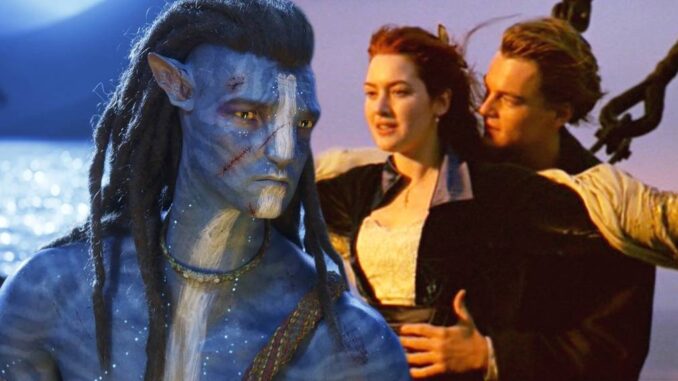
Echoes in the Deep: How Avatar: The Way of Water Mirrors its Predecessors' Triumphant Box Office Journey
James Cameron, the cinematic titan who redefined blockbuster filmmaking with Titanic and Avatar, seems to have cracked a code, a formula for capturing the global imagination and translating it into monumental box office success. Avatar: The Way of Water, his long-awaited sequel, is demonstrating a familiar trajectory, echoing the sustained momentum that propelled both Titanic and the original Avatar to the summits of box office history. While early speculation focused on immediate record-breaking numbers, the true testament to Avatar 2's success lies in its remarkable staying power, a phenomenon that mirrors the strategic dance of audience engagement perfected by its predecessors.
One key aspect of this shared behavior is the power of word-of-mouth and repeat viewings. Initially, both Titanic and Avatar faced skepticism. Titanic, plagued by production delays and a hefty budget, was predicted to sink. Avatar, with its heavy reliance on CGI and a new 3D technology, was seen as a gamble. However, upon release, both films captivated audiences with their immersive storytelling and groundbreaking visuals. The effect was contagious. Word-of-mouth spread like wildfire, transforming initial curiosity into a fervent desire to experience the films firsthand. Just as viewers flocked back to Titanic to relive the romance and spectacle, and to Avatar to immerse themselves in the vibrant world of Pandora, audiences are returning to Avatar 2 to witness the breathtaking underwater environments and compelling family drama. The sheer visual spectacle, coupled with Cameron's knack for weaving emotionally resonant narratives, creates an experience worth repeating, driving ticket sales long after the initial hype subsides.
Furthermore, both Titanic and the original Avatar benefited from the holiday season release window and its accompanying momentum. Titanic premiered in December 1997, just before the Christmas rush, allowing it to build momentum through the holidays and into the new year. The film became a cultural phenomenon, dominating theaters for months. Similarly, Avatar launched in December 2009, riding the wave of holiday enthusiasm and capturing the attention of families looking for a cinematic escape. Avatar: The Way of Water followed suit, releasing in December 2022 and strategically leveraging the holiday season to maximize its reach. This timing allows the film to benefit from multiple repeat viewings during vacation periods, creating a consistent flow of revenue and solidifying its position as a must-see event.
Another crucial element is the technical innovation and its impact on the viewing experience. Titanic revolutionized filmmaking with its groundbreaking visual effects, immersing audiences in the tragic sinking of the ship. The original Avatar pushed the boundaries of 3D technology, creating a truly immersive cinematic experience. Avatar: The Way of Water takes this a step further, offering stunning underwater visuals and advancements in motion capture technology. These technical leaps not only draw audiences to the theater but also justify the higher ticket prices associated with 3D and other premium formats. The promise of a unique and visually stunning experience, one that cannot be replicated at home, is a significant driver of repeat viewings and a key factor in the sustained box office success of all three films.
Finally, the longevity of these films is also tied to their broad appeal and accessibility. While Titanic tapped into the timeless themes of love, loss, and class division, Avatar explored environmentalism and the clash of cultures. Avatar: The Way of Water continues this trend, focusing on themes of family, belonging, and environmental stewardship. These universally relatable themes, combined with compelling storytelling and visually captivating worlds, resonate with a diverse audience, transcending cultural boundaries and generating widespread appeal. This broad appeal ensures that the films remain relevant and engaging for a longer period, contributing to their sustained box office performance.
In conclusion, Avatar: The Way of Water is not merely replicating the success of its predecessors; it is strategically following a well-trodden path, one paved with compelling storytelling, technical innovation, and a keen understanding of audience engagement. By mirroring the key behaviors of Titanic and the original Avatar – capitalizing on word-of-mouth, leveraging the holiday season, pushing the boundaries of visual technology, and appealing to a broad audience – Cameron has once again crafted a cinematic juggernaut poised to leave a lasting impression on the landscape of blockbuster filmmaking. The echoes of past triumphs resonate deeply, suggesting that Avatar: The Way of Water, like its predecessors, is destined to become a cinematic landmark.
